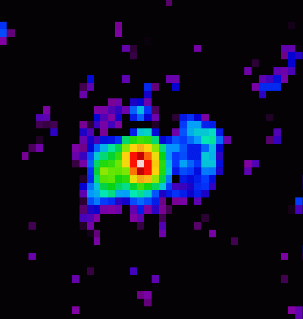
Size and Structure of the Narrow-Line Region of Quasars
Nicola Bennert1, Heino Falcke2, Andrew S. Wilson3, Hartmut Schulz1, Beverley J. Wills4
1Astronomisches Institut Ruhr-Universität Bochum, Universitätsstrasse 150, D-44780 Bochum, Germany; email: nbennert@astro.ruhr-uni-bochum.de; email: hschulz@astro.ruhr-uni-bochum.de2 Max-Planck-Institut für Radioastronomie, Auf dem Hügel 69, 53121 Bonn, Germany (hfalcke@mpifr-bonn.mpg.de)
3Astronomy Department, University of Maryland, College Park, MD 20742-2421 (wilson@astro.umd.edu)
4Department of Astronomy and McDonald Observatory, University of Texas at Austin, Austin, TX 78712, USA; email: bev@pan.as.utexas.edu
The Astrophysical Journal Letters (2002), in press
Abstract:
We have observed the narrow-line regions (NLRs) of the seven brightest radio-quiet PG (or BQS) quasars (z < 0.5) with the Wide Field and Planetary Camera 2 on board the Hubble Space Telescope (HST). Linear-ramp filters were used to image the [OIII] lambda 5007 line emission with 0.0455-0.1'' pixel resolution. We find that the NLRs are very compact with typical extents of 2''-4''. Two quasars show compact filamentary structures similar to Seyfert NLRs. They may be related to radio outflows. Most interestingly, when including a sample of Seyfert galaxies observed with HST, we tentatively find that the size of the NLR is proportional to the square root of the [OIII] luminosity. This is comparable to the scaling found for the size of the broad-line region with continuum luminosity, which has been interpreted in terms of a constant photoionization parameter. The relation determined here connects the NLR of radio-quiet quasars and Seyferts over three orders of magnitude in [OIII] luminosity.
Paper: Available in full length as PostScript and LaTex (AAS LaTex) Format.
Other publications can be found here.
Questions: Heino Falcke, hfalcke@mpifr-bonn.mpg.de